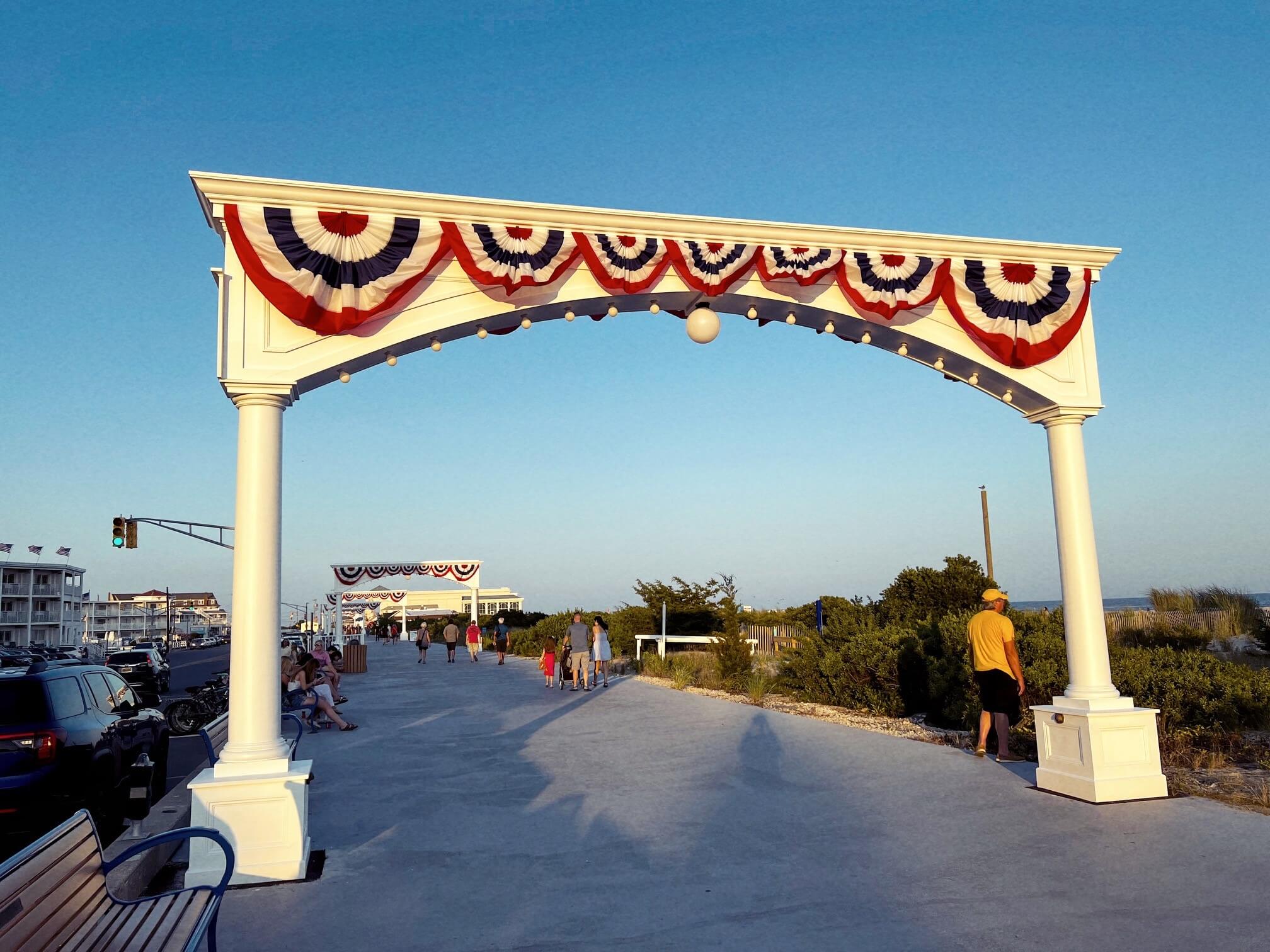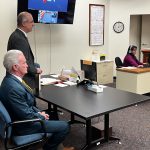CAPE MAY – The six arches that now grace the Cape May Promenade could just be the start of a progression of as many as 16 more.
At this stage, it is all just discussion, but the Cape May City Council heard from John Boecker, Curtis Bashaw, and Tom Carroll, July 18, concerning a possible Phase II and Phase III effort to continue the illumination of the Promenade with arches reminiscent of a period from 1910 to 1944.
The project that resulted in the current six arches began in July 2022 and it was linked to the widening of the Promenade. The work to widen the Promenade allowed underground conduit to be constructed, with the result being the removal of unsightly street poles, overhead lights, and overhead electrical wiring.
Many of those who speak admiringly about the arches on social media always return to the beautification and cleanup of the poles and wiring.
The project has not been without its critics, and they dominated at the July 18 council meeting.
As long as the project remained in what is essentially the commercial section of Beach Avenue, that criticism was somewhat muted. At the July 18 council meeting, several residents spoke publicly about their misgivings given the proposal to move east from Convention Hall into an area of Beach Avenue where many have residences.
Boecker, a registered architect who has donated his time to the project, said that a possible Phase II would include 10 additional arches with eight to the west of the current arches along a more commercial stretch of the city and two to the east beginning to inch into a more residential area.
Phase III, as it was outlined in the presentation, would then include six more arches all to the east and running down to Madison Avenue where the Promenade ends.
It was the potential move to the east of Convention Hall that sparked most of the opposition expressed at the meeting. Concerns included fears that the arches would interfere with the view, lower property values, contribute light pollution, add to projectiles in a hurricane, and increase flood risk.
Two residents called on the council to hold a town hall meeting before expanding the number of arches.
Boecker spoke to the issue of the durability of the arches. Unlike the wooden arches from the turn of the 20th century, the arches now are made with a steel frame capable of withstanding hurricane winds, he said.
The post-Victorian era experiment with arches for boardwalk illumination had failed in part because the arches were too vulnerable to the nor’easters that inevitably come up the coast.
Bashaw said the current six arches were paid for by the Fund for Cape May in a public/private partnership with the city. The city’s expenses were for the underground conduit and foundation, along with the ongoing expense for electricity use.
Bashaw called the six arches recently installed a demonstration project. He said funds from donations for the effort remained and could be used for additional phases.
Mayor Zack Mullock made clear that the council was receiving an update and was not yet ready to make any decisions about additional arches.
Since most of the opposition centered on moving the arches to the east of Convention Hall, one suggestion was to alter the Phase II proposal, so it only dealt with arches going west.
The two eastern arches in the current Phase II proposal could be removed and added to Phase III, allowing the city to make a separate and distinct decision on whether the arches would eventually march east on the Promenade in Phase III.
All options were left open at the conclusion of the discussion.
Contact the author, Vince Conti, at vconti@cmcherald.com.








